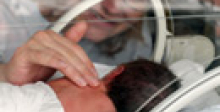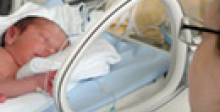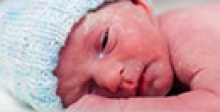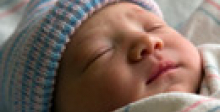Internal mini form
Contact Us Today
Cerebral Palsy is caused by brain injury or brain malformation that occurs before, during, or immediately after birth while the infant’s brain is under development. But how a brain injury affects a child’s motor functioning and intellectual abilities is highly dependent on the nature of a brain injury, where the damage occurs, and how severe it is.
What is brain injury, birth injury and brain malformation?
The cause of Cerebral Palsy is a brain injury or brain malformation that occurs while the brain is developing — before, during, or after birth. As a result of the brain damage during brain development a child’s muscle control, muscle coordination, muscle tone, reflex, posture and balance can be affected. It can also impact a child’s fine motor skills, gross motor skills, and oral motor functioning.
Every case of Cerebral Palsy is unique to the individual. This is due in part by the type of injury, extent of injury, and the timing of injury to the developing brain. The brain damage that causes Cerebral Palsy is a result of either:
- Prenatal disturbance of brain cell migration – genetic and environmental factors disturb brain cell migration as cells move to their appropriate location during brain development.
- Prenatal poor myelination (insulation) of developing nerve cell fibers – brain function is impeded when poor myelin provides an inadequate protective covering over nerve cells that aid in the transmission.
- Perinatal brain cell death – events in the birthing process that rupture blood vessels or starve oxygen to the brain.
- Postnatal non-functional or inappropriate connections (synapses) between brain cells – trauma, infections, and asphyxia that damage connections developed in the brain.
The big question: “How did this happen to my child?”
When a parent first learns that their child has received a Cerebral Palsy diagnosis, they wonder “What caused my child’s Cerebral Palsy?” Cause cannot always be definitively determined in every instance. However, knowing about what caused a child’s condition can be helpful.
A radiologist, neurologist or pediatric radiologist will share the data obtained through MRIs or a CT scan with the child’s pediatrician who has gathered medical history, observations, lab tests, and developmental findings. Together, they will determine the type of brain damage and either diagnose or rule out Cerebral Palsy. Once brain damage or brain malformation is confirmed, the focus quickly turns to the extent and location of impairment. Treatment, therapy and care plans are then made to help a child reach their future potential.
Often buried in the process is the full explanation of the cause. However, there are many benefits to determining the cause.
A family may receive peace of mind, health care practitioners can better treat and prevent the condition, school administrators can qualify a child for early interventions and education supports, and government agencies can provide many needed benefits. Having a formal diagnosis and cause determination assists parents in planning for their child’s future.
And, importantly, parents may question whether anything they did, or failed to do, during pregnancy, delivery or beyond may have contributed to their child’s condition. This is a heavy burden that parents needlessly carry. Knowing the cause of a child’s condition can help lift this burden.
There are family benefits to determining the cause, as well. Parents wishing to conceive more children will be aware of any familial or genetic predispositions that could lead to similar outcomes. They will be better informed on how to prevent or avoid risks that lead to Cerebral Palsy. And, they will have greater peace of mind during future pregnancies.
CLARIFYING TERMINOLOGY
Cause
Brain development begins shortly after conception. A relatively small number of cells divide and multiply into billions of cells. A small strip of tissue rolls into a neural tube. One end develops into the brain, the other into the spinal cord. Throughout, different types of cells form, group, and migrate to form various regions of the brain. The brain is considered fully developed two to five years after birth.
Brain defects are irregularities in the brain structure that typically cause impairment. Defects can occur from malformation, injury, or disease. The degree of impairment often is linked to the severity of damage. A brain sometimes compensates for defects, in essence, by “rewiring” to bypass or compensate for damaged areas. For this reason, beginning treatment as early as possible is typically recommended.
Brain malformations are defects that occur through abnormal development of the brain. Although defects can occur anytime during fetal development, the first 20 weeks are most vulnerable; any malformation that occurs while the neural tube is forming can have permanent consequences. Brain malformations may result in undeveloped areas, abnormal growth, or improper brain division into hemispheres and lobes.
Brain lesions are defects that occur from injury or disease. Causes during fetal development can include bleeding in the brain, infections, toxins, asphyxia, and many others. Lesions typically result from an incident or event that causes brain tissue death. Holes, which often fill with liquid, are left behind to form cysts.
RESOURCES
Cause
For more information on the cause of Cerebral Palsy, MyChild™ recommends the following websites:
- American Academy of Neurology
- Association of University Centers on Disabilities, or AUCD
- National Institute of Neurological Disorders and Stroke, or NINDS
- University Centers for Excellence in Developmental Disabilities, or UCEDD
- Medline Plus
- National Library of Medicine
- National Center for Injury Prevention, Centers for Disease Control and Prevention
- The Shaken Baby Alliance













